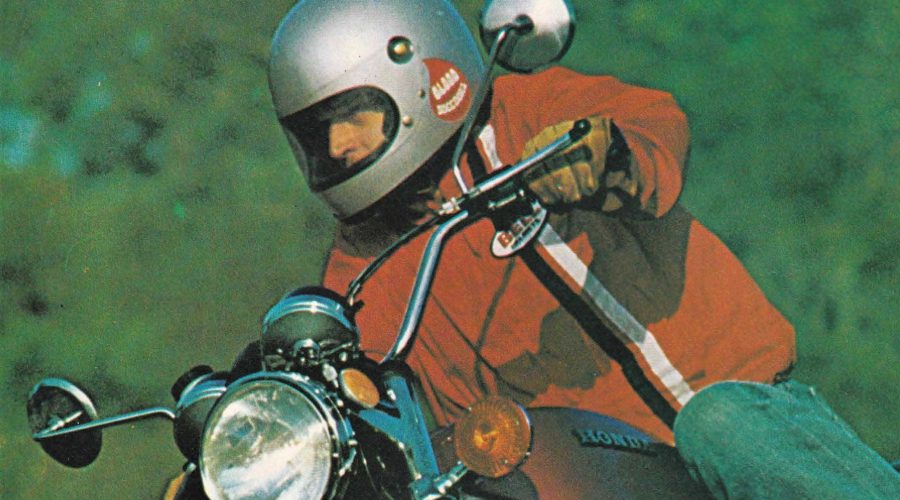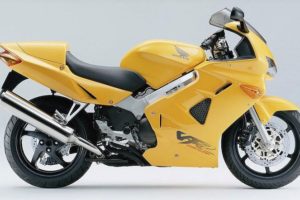Brian Cowan
A formidable intellect and the most technically literate Editor to take the chair at Two Wheels, Brian Cowan began his involvement with the magazine as a contributor in the early 1970s and through much of that decade was the magazine’s main road tester. Brian had a rare talent of writing lyrically and informatively about anything, but he was particularly fascinated about how bikes work and could hold his own with the best engineers in the business. His editorship ran from 1982-1985, when he returned to his beloved New Zealand, where he pursued a successful career as a motoring journalist and still writes.
He penned this retrospective on his time at Two Wheels for the magazine’s 35 year anniversary in 2003.
Looking back and comparing the slick, professional product that is Two Wheels today with what we produced over 20 years ago is initially a bit cringe-making – there’s an old-fashioned, almost amateurish, air about the mag as it once was.
But then I note the bikes, the fashions, the hairstyles, the idiom and colloquialisms in the writing, all equally coloured by the era – TW was then, as it is now, a magazine for its time.
And what a time it was. Motorcycling was in great heart worldwide. The frenetic boom of the late ’60s and early ’70s had abated, for sure, but there was still a huge sales momentum, driven in part by youngsters who’d met the nicest people on a Honda 50 stepthrough a decade previously and who were now committed late-20s bikers with the funds to spring for one of the dozens of new models being produced every year.
During the four or five years I was editing TW (I must have been having one helluva good time then because my memory of the facts and figures is now full of blank bits, and the old mags themselves are buried under the mountain of household effects from grown-up kids that currently chokes the garage) we catalogued the debut of the Suzuki GSXs (including the legendary Katana 1100S), Kawasaki GPz900R, the five-valve FZ series from Yamaha, Honda’s VT and VF families, the BMW R80 GS and K100, and the quickening of Ducati’s march towards exclusivity with the likes of the 900 Hailwood Replica, 600TT2 and 750F1.
Road two-strokes were clearing their throat for one last glorious hurrah in the shape of the Yamaha RZ250 and 500, Suzuki RG250, Kawasaki KR250 and Honda NS series. They might constitute an affront to modern concepts of quietness, clean exhausts and fuel efficiency, but I still believe the ‘strokers were the very essence of a sports motorcycle – a simple, lightweight device capable of carrying one person at insanely high speeds over stretches of winding road. By comparison, even the best four-strokes seem clunky, clumsy and over-engineered.
The late ’70s and early ’80s also saw motorcycling’s brief flirtation with turbo powerplants. At Two Wheels, we were quite taken with them (I had even been a fan of the RE5, Suzuki’s earlier and short-lived dabble with rotary power) but the innate conservatism of bikers worldwide dealt pretty smartly to their long-term prospects. A shame.
It was a fairly technical mag in those days, reflecting, I guess, my own fascination with what makes things tick. We went to extraordinary lengths to produce complete performance specs, hiring the old Castlereagh drag strip for standing 400 metre testing, and dynoing bikes as often as we could. Our road tests regularly ran to several pages of analysis of gearing and power bands and overtaking acceleration times. Even made my eyes glaze over. God knows what it did to many of the readers.
However, it also had a good balance in the form of the regular touring and humour features we ran. We were always happy to receive contributions from readers about their long distance exploits. When I took over as Editor, I inherited a filing cabinet full of submitted stories, through which I worked steadily for several years. There were some great yarns in that cabinet, though getting them into publishable form was often a severe test of editing skills.
Contributors like Lester Morris and Roger Moroney popped up regularly with humour. Looking back, that’s something that definitely dates the TW of the era, but I wonder whether we all mightn’t have grown too sophisticated in the time since -Moroney’s fictional stories on the manic exploits of Vance Vincent (superbly illustrated by Brendan Akhurst) were achingly funny.
Ah, Brendan Akhurst – one of the world’s funniest and most talented cartoonists, and a man who regularly brought the magazine right to the wire (and the editor close to a breakdown) with his inability to meet a deadline. I don’t think I’ll ever see anything as good as the full-page Maynard strip from Brendan we ran at the back of the magazine, but its production each month damn near killed the lot of us. The result was always worth it, however, with the added bonus for the editorial staff of the little marginal in-joke stories he’d draw, portraying most of us as a family of mice with distinctive individual characteristics.
Possibly because it was the testy side of my character that he often saw, Brendan portrayed me as an irascible old rooster, with a patch over one eye, one wing missing and stumping around on a peg leg.
I guess I was pretty confrontational in those days. I seemed to spend a good part of my time fighting either with management for more staffing support or with the advertising department for encroaching on editorial space.
It was even an in your face comment that had got me the job as Editor. A long-time contributor and road tester to Two Wheels, I had subsequently worked full-time for a couple of years as assistant editor of REVS Motorcycle News (then owned by rival publishing group Modern Magazines) before being bounced off a Ducati 900SS by a truck in 1977 and losing my right arm.
A couple of years later, once more writing as a freelancer and hearing of Peter Thoeming’s unexpected departure to start Bear… er… BIKE Australia, I had told a senior person at ACP that what Two Wheels had lacked for a while was a damn good editor. In response, I was challenged to put up or shut up.
From the inside looking out, they were a turbulent few years. Midway through my spell, Two Wheels (along with a clutch of other magazines) was sold by ACP to Federal Publishing and we left the politicking and intrigues of the established national publishing house for the south-Sydney rawness of Feds, whose previous publishing experience had been limited to suburban newspapers. Hell of a culture shock both ways.
My fondest memories of the time relate not to scoops or circulation increases or remarkable bikes but to the great fun a small group of us had in producing (against what it times felt like huge odds) the monthly miracle which was Two Wheels.
For a long time the in -house team consisted only of the incomparable and supremelyorganised Julia Linney, Don Cox (years later still bringing his penetrating insights to the world of motorcycle racing) and me. We were joined later by Bill McKinnon, Bernie (Bummers) Summers and John Waugh flogged the ads, while two of the most talented but out-of-control human beings I’ve ever met, John Taylor and Mark Elder, handled layout design and assembly.
Regrets? Only one mild one. At one stage we devised the ultimate safety/consumer feature, a real-world analysis of the effects of booze and dope (singly or in combination) on riding behaviour. It was going to involve a cast of hundreds and a complex series of skill tests at Oran Park, with the volunteers being fed either orange juice or juice ‘n’ vodka, or puffing on either serious dak or rolly baccy – and hopefully, not knowing which was which. In other words, all very scientific. We had lined up a boffin at Sydney Uni who had a legal permit to grow dope as part of a study on its effects (nice job, Boris!); he was happy to superintend it all and write up the results in learned journals. All we needed was approval from The Law.
Which we got. Not. One of the world’s most thoroughly corrupt law enforcement agencies made it abundantly clear we would be busted big time if we tried it. I even looked at doing the testing in New Zealand, but the logistics killed it in the end.
I reckon it’s a story that could still be done. Maybe some future editor of Two Wheels could give it a go?
By Brian Cowan, 35 Years of Two Wheels, 2003




